Automation
• 10 min read
Pipefy Vs. Kissflow: Which Automation Tool Is Better?
8th October, 2023
SHARE ON:
Pipefy enables your IT team to seamlessly design and automate a wide range of workflows and IT processes. Meanwhile, Kissflow automates repetitive, rule-based IT processes with utmost simplicity and precision.
However, both tools offer other distinct functionalities. You, as a CIO, can carefully evaluate before deciding which automation tool to choose.
To determine the best among Pipefy and Kissflow, you must thoroughly examine each tool's key capabilities and find out how well it caters to your IT team’s requirements. By doing so, you’ll be able to make an optimal choice.
Let’s assume a scenario to help you understand better; an organization requires a tool that has more device compatibility. So which automation tool will be more suitable in this situation, Pipefy or Kissflow?
Well, Pipefy holds a slight edge in terms of accessibility when compared to its competitor. Kissflow, being a web-based application, is compatible with various operating systems, including Windows, Mac, iOS, and Android.
Whereas, Pipefy offers the same compatibility with Windows, Mac, iOS, and Android while also providing the advantage of being compatible with Linux operating systems. This additional compatibility with Linux further enhances the accessibility and versatility of Pipefy.
However, this was just a brief overview of how specific needs can influence your decision-making process, and it's crucial to recognize that this is only a starting point. To make well-informed decisions, it’s important not to stop here. Instead, conduct a thorough evaluation of other features and factors as well.
So, let's move on and differentiate both tools based on different parameters to help you decide which automation platform will cater to the requirements of your IT team.
Pipefy Vs. Kissflow: Comparison Based on different factors
In the following sections, we’ll closely compare each parameter and determine which tool offers better functionalities to help your IT team streamline IT processes.
1. Solution Categories & Suitable For Which Business Size
Pipefy is categorized as procure to pay, client onboarding, online form builder, and shared inbox. Furthermore, this tool is well-suited for small business segments with 50 or fewer employees.
On the other hand, Kissflow is categorized as an application development platform and digital process automation (DPA). Furthermore, this platform perfectly fits the mid-market segment ranging from 51 to 1000 employees.
2. Key Features
Kissflow exhibits greater adaptability, making it an excellent choice for organizations seeking to customize their workflows according to their specific needs. Meanwhile, Pipefy is particularly well-suited for companies with traditional business processes that can benefit from streamlined and automated workflows.
What does Kissflow do?
As your IT team gains more familiarity with the Kissflow platform and develops a deeper understanding of their requirements, they can improve IT processes without disrupting the existing workflow. Kissflow maintains a digital record of every action within a workflow, enabling your IT team to download and print this information for in-depth analysis. This feature facilitates the identification of bottlenecks and enables further refinement of workflows.
Additionally, it eliminates manual intervention by automating repetitive IT tasks. This hands-off approach enhances your IT team’s efficiency and productivity.
Features
Kissflow offers features like process performance metrics, reports, analytics, SLA status indicators, progress tracking, real-time notifications, and business process mapping.
What does Pipefy do?
Whereas, Pipefy offers your IT team the capability to divide workflows into distinct phases, known as "pipes" within the platform, and establish connections between IT tasks and various elements to create comprehensive workflow maps.
Additionally, it provides a form builder feature that allows the creation and sharing of forms with clients for the purpose of gathering feedback and other relevant information.
One noteworthy advantage of Pipefy is that clients' responses, regardless of whether they have a Pipefy account or not, are directly uploaded to the dashboard. This prevents any instructions or requests from being misplaced or overlooked amidst the workflow, ensuring seamless communication and efficient collaboration.
Features
Pipefy offers features such as it enables your IT team to quickly design and automate business workflows, improving efficiency and productivity. Furthermore, it integrates operations from end to end. Also, provide your IT team with a 360-degree view of IT process details.
3. Business Process Automation
Low-code/No-code Automation Tool
Pipefy’s business process automation (BPA) software offers more than just automation. With process visualization and integration features, your IT teams can create and customize workflows according to their requirements. The software's standardized processes make it easier for your IT team to enforce requirements and meet security and compliance targets. Automating tasks reduces the involvement of humans and minimizes errors, while real-time data allows your teams to evaluate performance and identify bottlenecks and other issues quickly.
It further integrates with your organization’s existing tools, whether it's spreadsheets, complex ERPs, or other legacy systems. This integration enhances control and visibility into IT processes. Also, by eliminating paperwork and automating repetitive IT tasks, Pipefy empowers your IT team to focus on other core areas.
Furthermore, Pipefy is designed with security as a top priority. It provides control over access by assigning user permissions and implements security measures like Single Sign-On (SSO) and Two-Factor Authentication (2FA). The software also ensures identity management, accessibility, and ease of use for a seamless user experience while maintaining robust security measures.Whereas, Kissflow is designed to help your IT team simplify complex IT processes by automating repetitive tasks and reducing manual work. It offers a visual interface that allows your IT team to create, manage, and optimize various workflows without the need for coding or technical expertise.
Furthermore, this tool enables your team to create custom workflows by defining the steps, actions, and conditions required for each process. This includes setting up approvals, notifications, escalations, and integrations with other systems.
Also, it facilitates collaboration among team members by assigning tasks, tracking progress, and providing visibility into the status of each process. It enables participants to comment, share files, and communicate within the context of a workflow.
The tool provides insights and analytics on workflow performance, bottlenecks, and process efficiency. Your IT team can generate reports, track key performance indicators (KPIs), and identify areas for improvement.
4. Integration Capabilities
Both tools seamlessly integrate with multiple solutions to streamline the IT processes.
However, Pipefy excels in integrating with productivity-boosting applications and fostering collaborative efforts. It effortlessly connects with well-known applications such as GitHub, Bitbucket, and Slack, while also offering seamless integration with Zoom and Zoho Projects via Zapier.
On the other hand, Kissflow was primarily designed for compatibility with Google Applications. It seamlessly integrates with Caspio, Xero, Amazon EC2, Slack, Trello, Dropbox, JIRA, and Microsoft Azure through Zapier. Along with that, it further connects with payment platforms such as Quickbooks, PayPal, and Stripe.
5. Pricing Structure & Customer Ratings
Pipefy caters to startups, freelancers, and students by offering free basic services. Pricing for advanced functionalities varies based on capabilities and is billed on a per-user basis. A basic centralized workflow management subscription costs $18 per month per user. For users needing enterprise-level capabilities encompassing advanced security measures and technical support, the pricing is set at $30 per month per user.
Whereas, Kissflow provides its users the convenience of creating and managing up to 1,000 cases per month at no cost. For additional workflow services, pricing starts at $9 per user, per month, with flexible enterprise-level options available. For those seeking the enhanced features and integrations the Workflow Suite offers, pricing begins at $390 per month, accommodating up to 20 user logins..
Customer Ratings
Pipefy- G2: 4.6/5, Capterra: 4.6/5
Kissflow- G2: 4.3/5, Capterra: 3.9/5
Since we have differentiated both tools, you might have now understood which, out of Pipefy and Kissflow, will fit your IT team’s requirements perfectly. However, it’s necessary to consider that other automation tools are also available. One such exceptional platform is Zluri, which offers exquisite features that help your IT team seamlessly automate IT processes.
So, let’s have a quick look at how Zluri is a better substitute for Pipefy and Kissflow.
Zluri: Your Ultimate Automation Solution
If you're in search of an application that can effectively automate complex and repetitive IT tasks, then Zluri is the ultimate solution for your IT team. With Zluri, the possibilities are endless. By eliminating manual processes and embracing automation, Zluri empowers your team to achieve greater efficiency and productivity.
How does Zluri make it all possible? With Zluri’s automation and integration capabilities, your IT team can streamline workflow effectively. For example, Zluri allows your IT team to create onboarding and offboarding workflow, which helps automate granting, modifying, and revoking access with just a few clicks.
Let's take a closer look at how Zluri works to provide you with a clearer understanding.
With Zluri's impressive integration capabilities, your IT team can verify your employee's identities before granting them secure access to SaaS applications. But how exactly does it achieve this? Zluri seamlessly integrates with the HRMS; whenever a new employee joins your organization, the employee details get updated on the HR system.
Then, Zluri fetches the data and updates the same on the centralized dashboard. This makes it easier for your IT team to verify each employee's identity without switching screens multiple times.
Once the verification process is done, your team can move towards the next step, i.e., to create an onboarding workflow that will help them automatically grant access to multiple employees simultaneously with just a few clicks. Here're the steps that they need to follow:
Step 1: Click on Zluri's workflow module, and select the onboarding option from the drop-down options
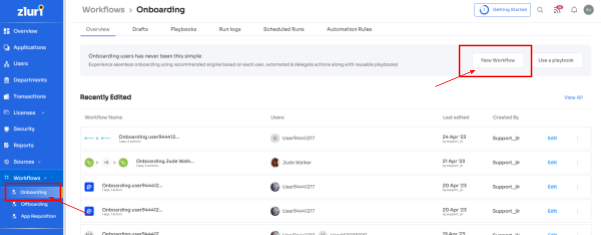
Step 2: Further, click on the New Workflow option. This will open up a Select user for onboarding pop-up. From here, they can choose the employee(s) that needs to be on board or can even use the search bar to look for a particular employee. Click on continue after selecting the employee.
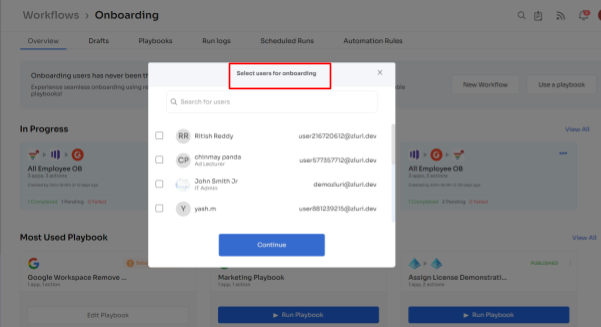
Step 3: Based on the employee's department, role, and seniority, Zluri will display some suggested apps that your team can view under 'recommended apps.' Select any of those, then take the necessary action for the selected applications.

Step 4: To add actions click on Edit Action and continue by entering the required information. Your team can also schedule the actions to execute the workflow on the day of onboarding. Once done, click on Save Task, and the actions will be saved.
Also, your team can click on Add an Action and choose actions from the drop-down menu. Proceed further by entering the necessary details and clicking on Save Task.
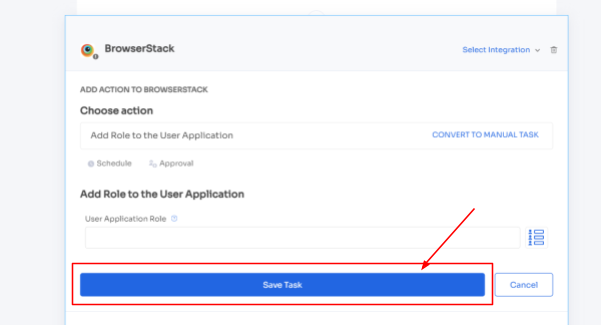
Apart from that, Zluri allows your IT team to add in-app suggestions. This option helps add your employees to different channels or send an automated welcome message. The actions can vary for different applications and are mentioned under recommended actions.

Step 5: Click Save as Playbook to save your workflow. A dialogue box will appear, instructing your team to name the playbook. Add a name, click on Save Playbook, and the onboarding workflow is ready.
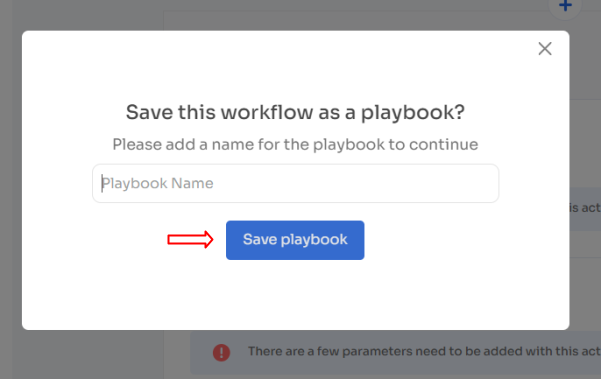
Zluri doesn't stop here; it not only allows your team to create new workflows but also "playbooks" (i.ecollections of recommended applications for automation) for different roles, departments, and designations, making it easier to quickly onboard new employees only with a few clicks.
Automates access granting and revoking upon mid-lifecycle changes
With the change in your employee's role due to promotion, change in department, or geo-shift, their access requirements also changes. To maintain productivity and ensure seamless workflows, it's essential for your employees to have access to the necessary SaaS apps.
This means that your IT teams should be able to quickly grant access to new applications while revoking access to any that are no longer needed. However, this process can be time-consuming and complicated when the manual method is practiced.
So to overcome this challenge, what Zluri does is, by integrating with the HR system, it updates the employee role change data on its centralized dashboard from where your IT team can verify the change and accordingly grant the employees access to new apps and revoke required access.
Further, to enhance employee experience, Zluri offers a self-serve model, an Employee App Store, i.e., a collection of SaaS applications approved and verified by your IT admin. This empowers your employees to choose any SaaS app from the EAS and gain access to it within no time.
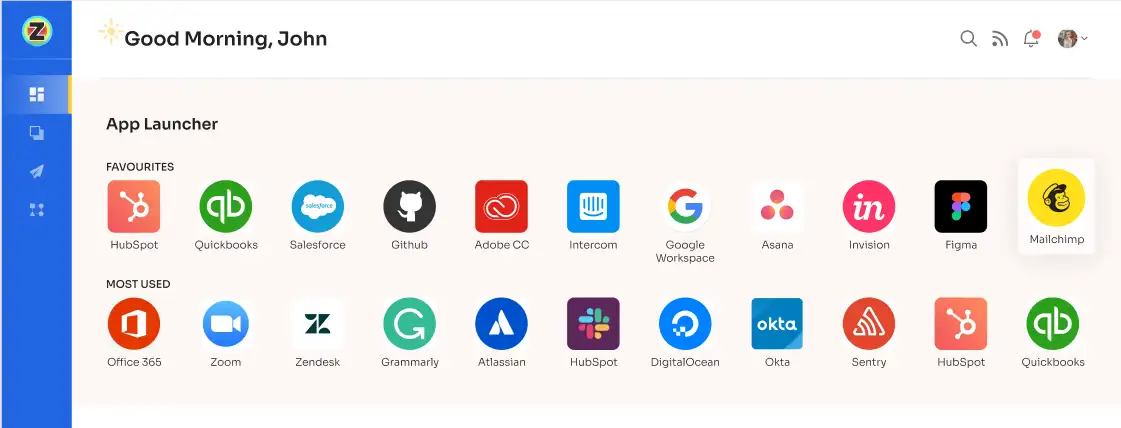
All your employees need to do is submit an access request, and your IT admin will get notified immediately. Then, the admin verifies the employee's identity and grants them secure access with just a few clicks.
But how to submit an access request? Here're the steps that your employee needs to follow.
Step 1: Your employees will see an icon in the topmost right corner of the Zluri main interface; click on that, and a drop-down will appear; then, from there, select the Switch to Employee View option.
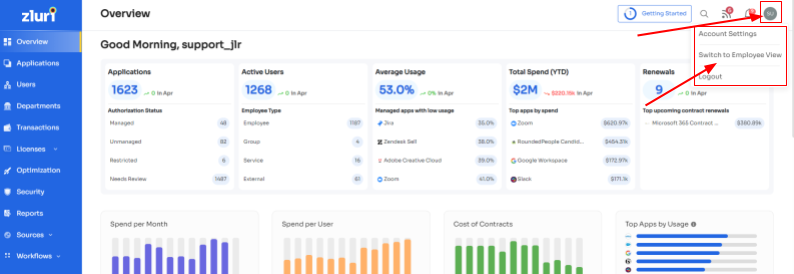
Step 2: By default, the overview dashboard will be viewed; click on Request Access to an Application to proceed forward.
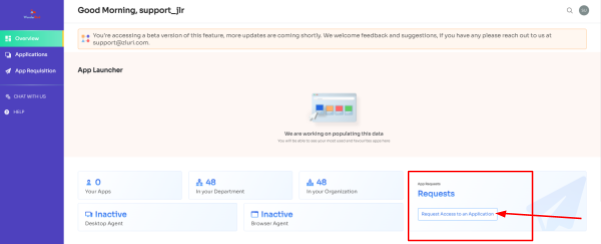
Step 3: Now, a dialog box will pop up where your employee has to type the application name to which they need access. After that, click on Continue.
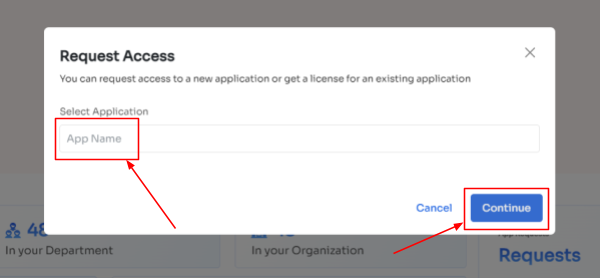
Step 4: At times, some applications are not used in a company, and a dialogue box will appear stating this app is not used in the organization, but your employees can still request that application, so proceed by clicking on continue, and another dialogue box will appear, showing similar applications that are being used in the organization.
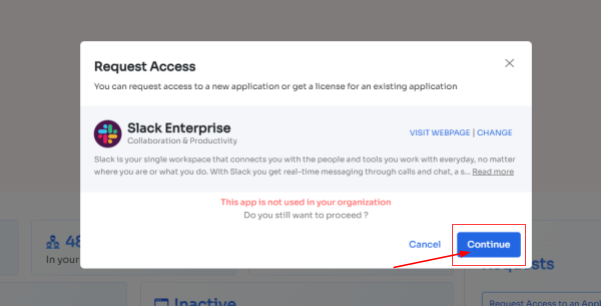
If your employees want to opt for a similar application, they can simply click on the application or click on Ignore and Continue to proceed forward with your request.
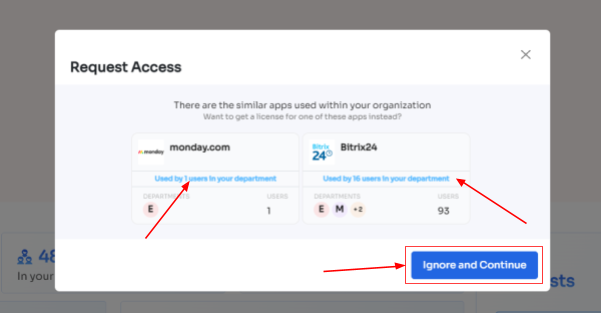
Step 5: Further, they have to enter in the necessary details like selecting the license plan, subscription duration, and description of why they need the application and attach supporting documents. Click on Confirm request after filling up all the details.
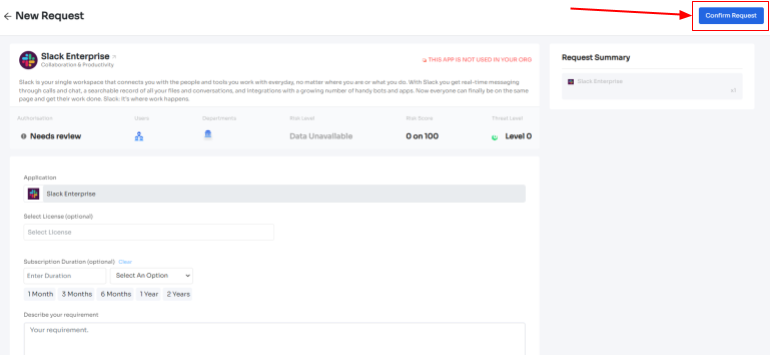
And that's it. The app access request has been submitted.
Note: Additionally, if the request has been modified in any way or if one of the approvers suggests any substitutes for the application, your employee can check it in the "Changelogs."
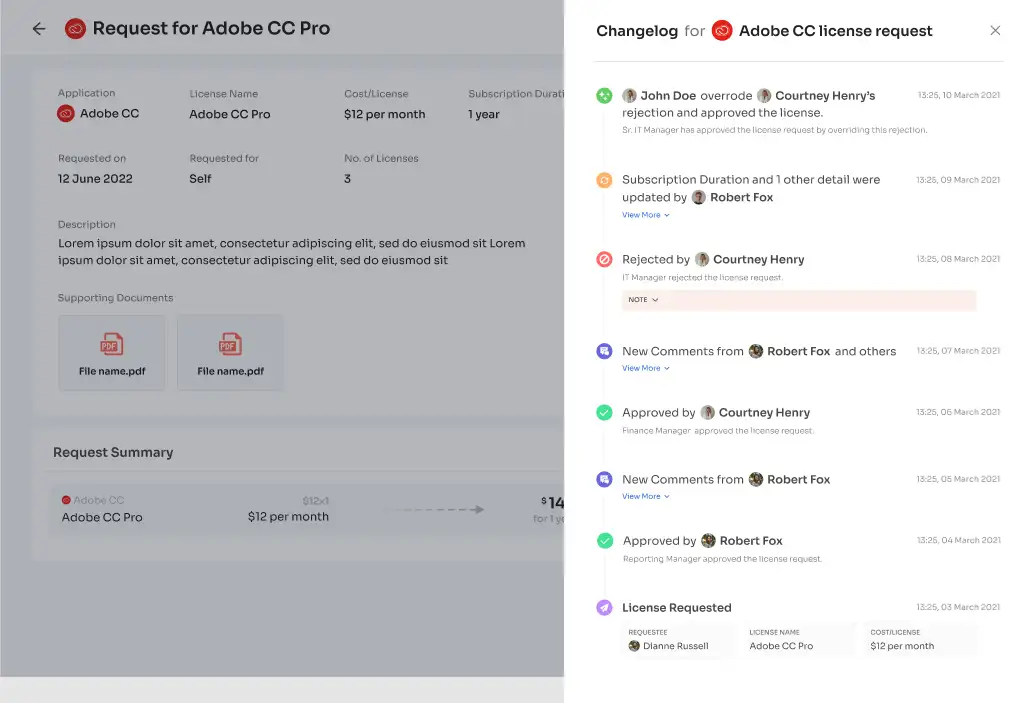
Automatically revoke access upon employees' departure
As your employees depart from the organization, whether due to termination, voluntary resignation, or sabbatical, it's crucial for your IT teams to promptly revoke such employees’ access to all the SaaS apps and deactivate/suspend their accounts at the right time. Failing to do so can result in data breaches and give way for unauthorized users to compromise data.
So with Zluri, your team can securely revoke all the access without missing out on any by creating an offboarding workflow. This lets your team streamline the deprovisioning process with just a few clicks.
Here's how your team can create an offboarding workflow:
Step 1: Click on Zluri's workflow module, and a dropped-down list will appear; from the list, select the offboarding option.

Step 2: A popup labeled 'Select the user for offboarding' will appear. Select the employee(s) that needs to be offboard, or can look for a specific employee in the 'search box.' Click on 'continue' after selecting the employee.
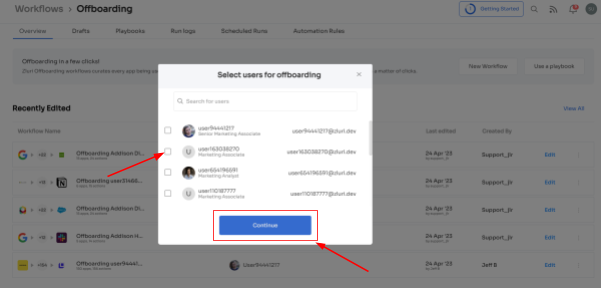
Step 3: Your team will be able to view all the SaaS apps your employee can access. Now click on the application, and Zluri will display some suggested actions under 'recommended actions.' Select any of those, and one can even select multiple actions, then carry out the necessary action for the selected applications.
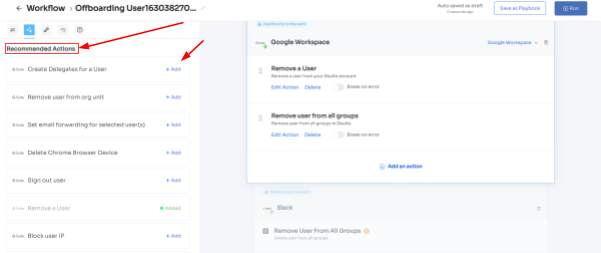
Step 4: Your team can also add other actions by clicking on Add an Action and continue by entering the necessary details. It also allows scheduling the actions to execute the workflow on the day of offboarding. Click on Save Task after adding the actions.
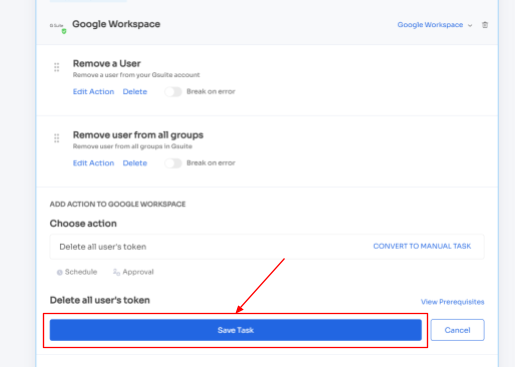
Step 5: At last, to save the workflow, click on Save as Playbook. A dialogue box will appear, instructing to name the playbook.
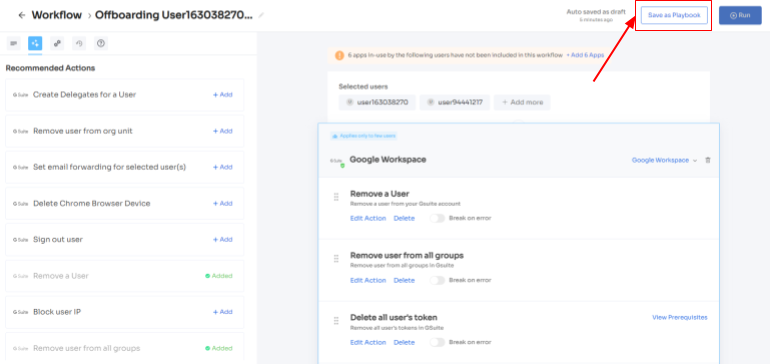
Add a name, click on Save Playbook, and the offboarding workflow is ready.
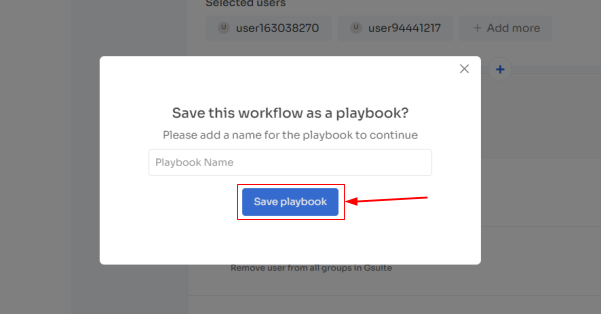
Zluri goes beyond just automating onboarding and offboarding workflows. Its automation capabilities extend to providing your IT teams with real-time alerts and proactive measures to safeguard your organization's SaaS app data.
With Zluri, your IT teams are automatically notified of upcoming renewals, ensuring they stay ahead of critical deadlines. Moreover, they have the flexibility to set manual alerts based on specific requirements, allowing for even greater control and customization.
In addition to renewal alerts, Zluri is your organization's robust security partner. It actively monitors and detects any unauthorized access attempts to your SaaS applications. By promptly alerting your IT teams about these incidents, Zluri empowers them to take immediate preventive measures, safeguarding your sensitive data from potential breaches.
Zluri's automation capabilities not only enhance operational efficiency but also bolster your organization's security posture, providing a comprehensive solution for your IT team's needs.
That’s how Zluri’s platform works, so now you know why Zluri can be a better choice; to learn more about it, book a demo now and give it a try.
Related Blogs
See More
Subscribe to our Newsletter
Get updates in your inbox
